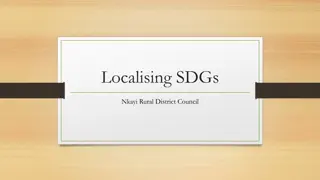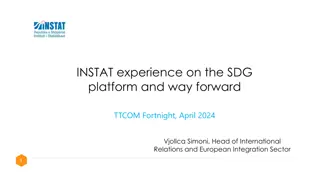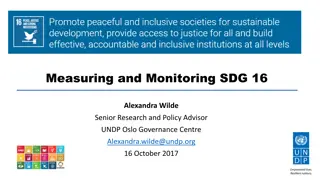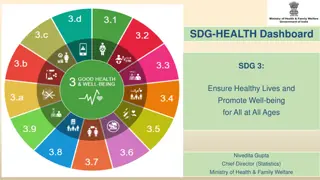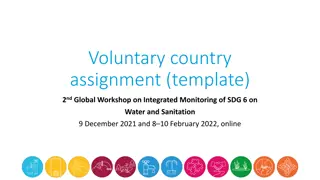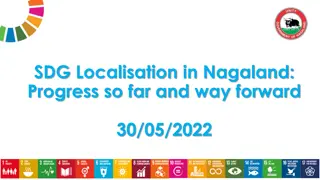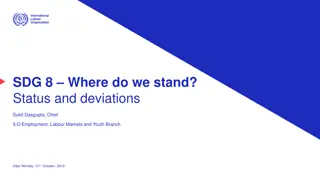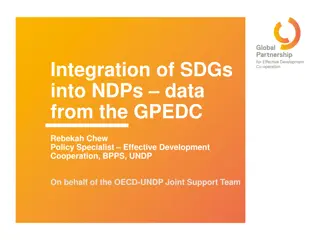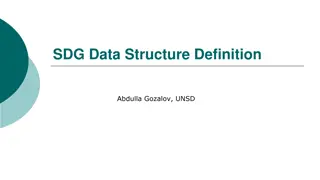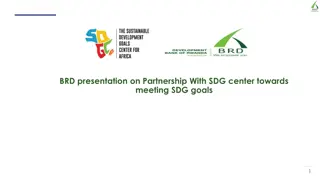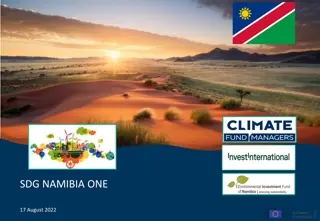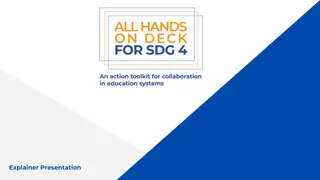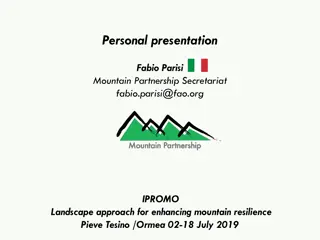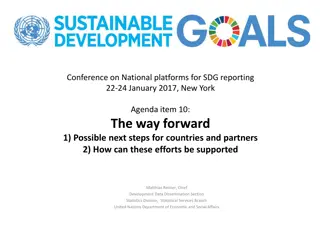Enhancing Education for Sustainable Development through SDG Integration
In our Faculty Learning Community, we aim to expand understanding of Education for Sustainable Development and the UN Sustainable Development Goals, build a shared resource library, foster community engagement, and achieve personal development goals. We focus on aligning Student Learning Objectives with SDGs, ensuring SMART SLOs, and integrating portable SLOs that promote higher-order thinking skills related to complex societal challenges. Our emphasis is on prioritizing characteristics of ESD such as being broad, complex, engaging, culturally affirming, inclusive of values and ethics, empowering, transformative, and transdisciplinary.
Download Presentation

Please find below an Image/Link to download the presentation.
The content on the website is provided AS IS for your information and personal use only. It may not be sold, licensed, or shared on other websites without obtaining consent from the author.If you encounter any issues during the download, it is possible that the publisher has removed the file from their server.
You are allowed to download the files provided on this website for personal or commercial use, subject to the condition that they are used lawfully. All files are the property of their respective owners.
The content on the website is provided AS IS for your information and personal use only. It may not be sold, licensed, or shared on other websites without obtaining consent from the author.
E N D
Presentation Transcript
Welcome back to our Faculty Learning Community: Teaching with the UN Sustainable Development Goals!
FLC Objectives Through our participation in this FLC we will: Expand our shared understanding of Education for Sustainable Development (ESD) and the UN Sustainable Development Goals (SDGs). Build a shared library of Education for Sustainable Development resources. Build community with and learn from colleagues also engaged with the UN SDGs. Advance a personal objective (be it unit/course/program/university level or professional development).
ESD and Student Learning Objectives (SLOs): What do we want students to be able to do as a result of our unit/course/program (short and long-term)? How do we go about integrating existing and SDG-oriented SLOs?
SMART SLOs Specific and Student-Centered Measurable Action-Oriented & Achievable Results-Based Time-Bound
Are these SLOs SMART? By the end of the lesson, students will be exposed to these topics: Bonding in materials, the crystal structure of metals and ceramics, and defects in materials. By the end of the course, students will: Critically evaluate public messaging about climate change and design a media campaign grounded in climate science and evidence-based public communications techniques. Students will understand how they can apply their disciplinary skills to advance climate solutions, including advanced solar technologies.
What are portable SLOs and how are they related to SDG integration? High-level SDG SLOs Course level SLOs Portable SLOs Higher-order thinking and skills that help students connect disciplinary knowledge/skills to complex societal challenges and solutions. Higher-order thinking and skills you want students to develop by the end of your course Higher-order thinking and skills you want students to take with them to the next class, into their careers, and onto a lifetime of learning. EXAMPLE: Describe and provide examples of how laws and regulatory policy can foster or hinder emerging technologies.* EXAMPLE: Predict the likely effects of proposed laws and regulatory policy on the dissemination and impact of emerging technologies. EXAMPLE: Evaluate alternative energy regulatory policies with respect to their impact on the expansion of renewable energy and climate vulnerability in the U.S. *From Eric Overby s Analysis of Emerging Technologies course
For reference: What characteristics of ESD will we prioritize? BROAD COMPLEX ENGAGING ALIGNED CULTURALL Y AFFIRMING INCLUDES VALUES & ETHICS EMPOWERING TRANSFORMATIV E TRANSDISCIPLINARY
Options: SDG SLO integration can be at lesson, unit, and/or course levels Possible integration with an SDG SLO: Identify opportunities to reduce energy and water use and the creation of toxic byproducts in _________ industry. (SDG 9) Course SLO: Design experiments using statistical methods, for the purpose of building models and designing chemical processes* Course SLO: Formulate and solve process design problems, based on economic analysis and using mathematical models of chemical processes* Unit SLO: Evaluate alternative solution methodologies with respect to energy, waste, and health impacts. (SDGs 3,6,7,9) Unit SLO: Identify and effectively employ appropriate statistical tools for a variety of experiments. Unit SLO: Apply appropriate economic analysis tools to evaluate *Course SLOs from Yoshiaki Kawajiri s Numerical Methods in Chemical Engineering
Options: Consider different kinds of SLOs Behavioral/practical: Cognitive/intellectual: The learner can explain historical reasons for current settlement patterns.* Socio- Emotional/dispositional: The learner can articulate ways in which their natural, social, and technical environment has shaped their own identity.* The learner is able to plan, implement, and evaluate community-based projects in collaboration with others.* Students will implement effective search strategies and evaluate sources of information for relevance and authority.** The learner appropriately applies basic principles of sustainable planning and building in their designs.** Students will value scientific expertise in decision making and demonstrate this by using evidence appropriately.** *Adapted from SDG 11 Learning Objectives (p. 32) in Education for SDGs Learning Objectives (UNESCO 2017) **Adapted from Learning That Matters, Ch. 4
Options: Adding or Integrating SDG SLOs? Add this as another course SLO? Or, integrate original and SDG SLOs?
Options: Adding or Integrating SDG SLOs? Add this as another course SLO? Or, integrate original and SDG SLOs?
Chat storm prompt For my course or program, I think it will work best to incorporate SDGs into SLOs at the lesson/unit/course/program level and prioritize cognitive/socio- emotional/behavioral SLOs (specify your tentative choices).
Resource Walk-Through (see today s folder) These reports have detailed information about the SDGs including SLOs (not all are SMART consider them as starting points or idea generators): Sustainable Foundations: A Guide for Teaching the SDGs Education for the SDGs_Learning Objectives These worksheets can support your planning, from thinking through big ideas and skills to integrating an SDG SLO with an existing course SLO: Resources for Teaching with the SDGs Framework for Planning SDG Course Integration SDG Worksheet SLO Integration Template
Try it Out! Are you working on re-designing a course or unit? You may find it helpful to use this worksheet and this template. Are you working on SDG integration across multiple courses (or an entire school or college)? You may find it help to refer to examples of portable SLOs LTM p.68) and then think through big ideas and key skills or competencies for your field. For all-- once you have a draft, ask: Is your SLO student-centered and specific? Is it measurable? If course or program-level, is it higher-order or portable? Post your work here.
Thanks! Next meeting is October 11





